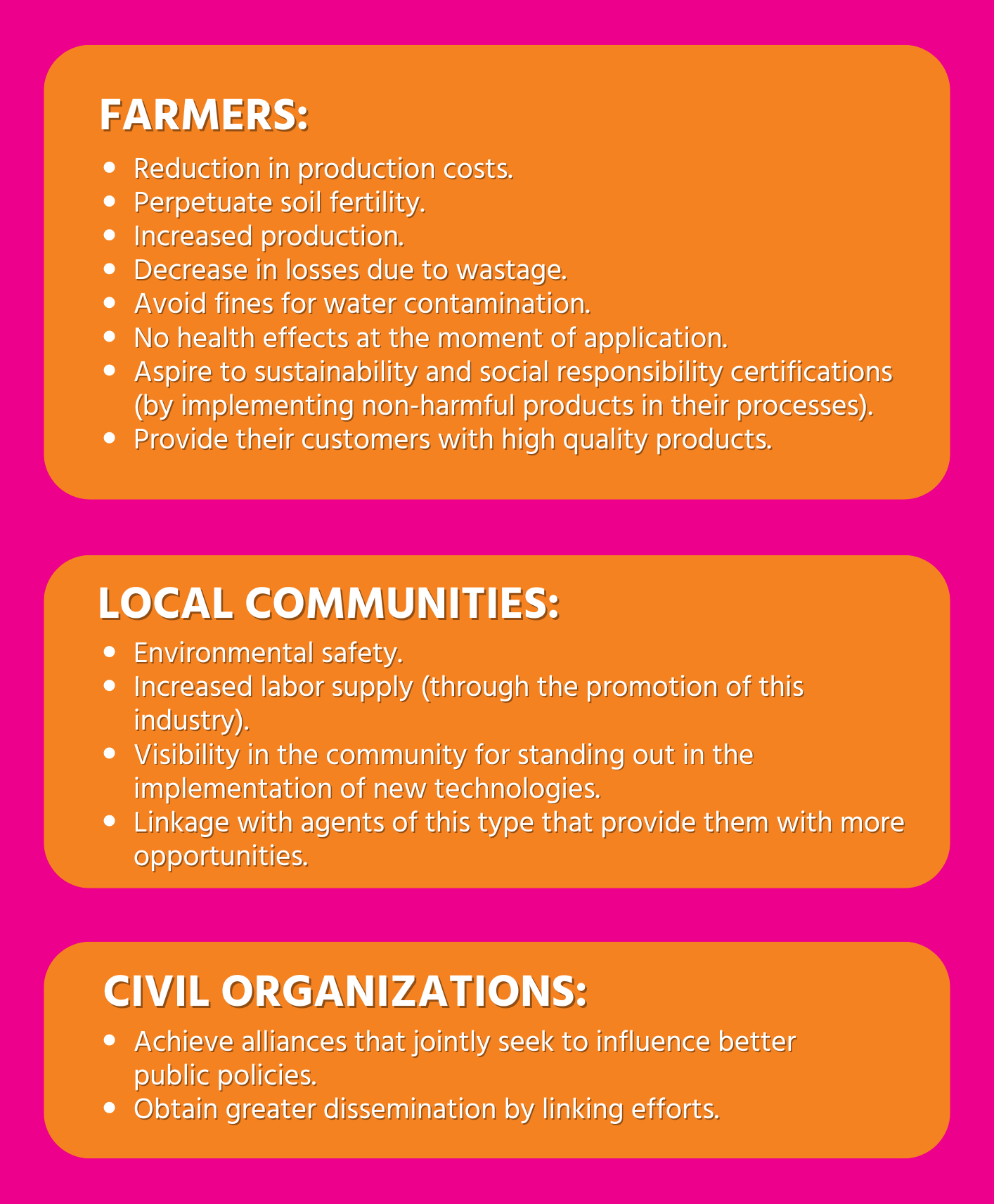Integrated Human Practices
Overview
In this section we make a summary of Human practices being integrated into the project. Here we present some diagrams which synthesize our questions, reflections and findings from which we drew conclusions to work on purpose, design and execution of the project, shaping it. However, the instruments, basis, and procedures for the development of the complete research are discussed later with deeper detail.
The current strategies to protect corn crops from the Fall armyworm have catastrophic consequences upon the environment and human health. It is a complex problem and bringing up a solution to it requires addressing the situation from diverse approaches.
How is our project good for the world looking at the big picture?
It addresses a global need for responsible maize production, benefiting both producers and the environment by reducing the impact of conventional pesticides. Additionally, it serves as a tool for transitioning towards sustainable farming models.
How did our Human Practices help us shape our project?
Understanding the global implications of the problem along with the local point of view led us to work on a biopesticide which addresses the interests and needs of the affected population, with an overall background understanding from where we could also use it to reach scenarios in which the problem is not only solved, but also prevented.
Design (Selection of the project): Understanding sociopolitical processes revealed that, although there are alternative farming methods where the pest isn't a significant issue, these cannot be applied immediately. Therefore, alternatives that protect crops without harming human health are urgently needed.
Execution (Implementation of the product): This is a scalable project that is both affordable and practical for small and medium-sized producers. By approaching Agropip as an element of Integrated Pest Management within a strategy for transitioning farming systems, we can contribute to long-term shifts towards autonomous and sustainable agricultural models.
How are we taking action and not just considering opinions?
We do not only address stakeholders for understanding the problem, but also adjust our approach seeking to reach a solution which can come back to those who need it the most, the farmers. Our project tends to health as a most imperative situation, stops degrading the soil and is meant to give autonomy to the producers, further non dependent on any kind of pesticides.
Stakeholder Diversity. Those getting the most direct impact of the problem and those trying to fight it come from different backgrounds and work with different perspectives under different conditions. Which is why we addressed producers, academics, governments and civil organizations for a wide range of perspectives. All from different parts of the country.
Why We Addressed Them. To design something that addresses real needs, we must understand the actual conditions of those experiencing the problem. Understanding the root of the issue allows us to assess whether the proposed solution is viable. Furthermore, it enables us to seek an approach that can have a more profound impact.
Linking with Stakeholders. If the problem is complex, the approach must be multidisciplinary. In addition to the project's development in terms of design, understanding the work of stakeholders can guide us in identifying limitations, action paths, and potential collaborations to combine efforts. The justification for our identification of the stakeholders and what we learned from them fully presented on Human Practices and Integrated Human Practices.
Thoughts
Which needs are we prioritizing? The farmers' producing issues and consequences on current conditions.
Which values are we prioritizing? Recognition of subjects. Respect for diversities. Caring for life.
Our compromises? Developing a product which is affordable, safe and effective for stopping health and environmental impact for small and medium corn producers.
Responsibilities
Communicate honestly possible positive and negative impact and how to prevent it:
Agropip, being a product based on synthetic biology and designed for use in open fields, may have repercussions on the biodiversity of the areas where it is applied, as well as potential risks to human health.
Our team is fully aware of the potential risks that Agropip presents, which is why our decision-making and problem-solving approach is grounded in field research, empirical and theoretical evidence, and mathematical modeling, always considering biosafety principles. Further discussed on Sustainable development - Negative Impact- and Safety.
Responsiveness
HP in the team: As much as we recognize identities from those who we approach outside, we keep a horizontal decision making system inside the team, where we discuss and make the big decisions together.
Knowing our limits: By understanding the complexity of the problem we know what´s out of our reach, which involves characters playing key roles and what issues are more a matter of laws and politics, even culture, rather than Synthetic biology. That helped us find a specific pathway to work out through all those circumstances.
Recognizing existing work: That specific pathway wouldn't be possible without reaching out to our government, private sector and academics and civil organizations. We discuss the collaborations further in the section of our approach.
The existing alternatives for the same pest are still dependent from 40 to 60% of pesticide usage, which reduces the impact, but does not eliminate it. Which is why our biopesticide can still play an important role in caring for the fields and its workers.
In the section of "Understanding the Problem", we dive into why not only chemically but also socially and economically this project fills missing links for better practices in the corn fields. Meanwhile, we confirm that it is needed.
Although the research was constantly leading to new key questions, all of this started out from real experiences to which we had had direct contact. To learn these stories, go to local problems in Human Practices, for diving into the field, even existential questions, go to Philosophies.
To give a clear conceptualization of the stakes mentioned before, we design a diagram for mapping the problem and another one which illustrates the approach defined for the application of the final project. The construction of both maps is grounded on the research fully presented on Integrated Human Practices.
Approaching Stakeholders
It is essential to understand the dynamics that affect farmers and their contexts. This approach proved key in identifying and analyzing the experiences of producers. Through the application of interviews, we have gathered valuable information that provides a broad view of the challenges they face in their daily work, particularly regarding pest management and the use of pesticides.
This analysis has allowed us to assimilate the concerns and expectations of farmers, which will guide us in designing effective strategies to connect with and support their needs.
Demographic Data
The average age was 53.3 years, the maximum level of education that most of the interviewees had was up to secondary school and all of them were Mexican nationals.
Our sample was entirely made up of men, since it was not possible to contact women who are dedicated to this activity (which we do not rule out), which shows the social stigma still present in our culture of how certain occupations are socially accepted according to gender.
Socio-economic Context
All of those interviewed are descendants of farmer parents, they were introduced to the sector from a very young age, so this work activity was part of their education. Among the main motivations that their work gives them is the economic income they receive and they declared that they enjoy contact with the countryside.
Even with the good points mentioned above, 80% of those consulted carry out another activity that remunerates them financially because they comment that the profit obtained from agriculture is not satisfactory, which is why they are forced to seek extra income through a different means.
Another notable issue is that Jalisco farmers do receive government financial support (although a small amount), while Sinaloa farmers do not receive any. This leads us to conclude that the state government of Sinaloa does not provide sufficient incentives to boost the agricultural sector, despite the fact that it is one of the states that contributes the most in crop production nationwide.
Contributions to the Project
100% recognized the fall armyworm as a pest present in their corn crops, they commented that it is one of the most frequent and complicated pests to treat. Other common pests exposed are: Whitefly, Blind Hen and the Stem Borer.
They all stated that the use of pesticides is necessary to control pests and that they have used these substances, even though the majority believe that they are not safe substances, they say they have no other option.
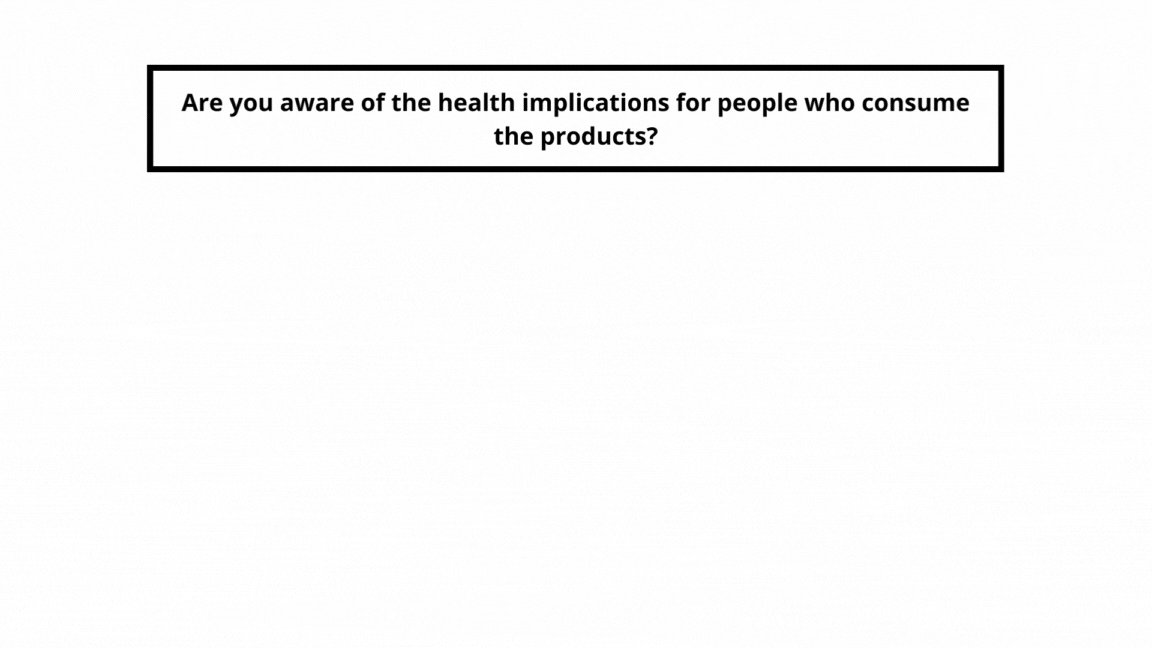
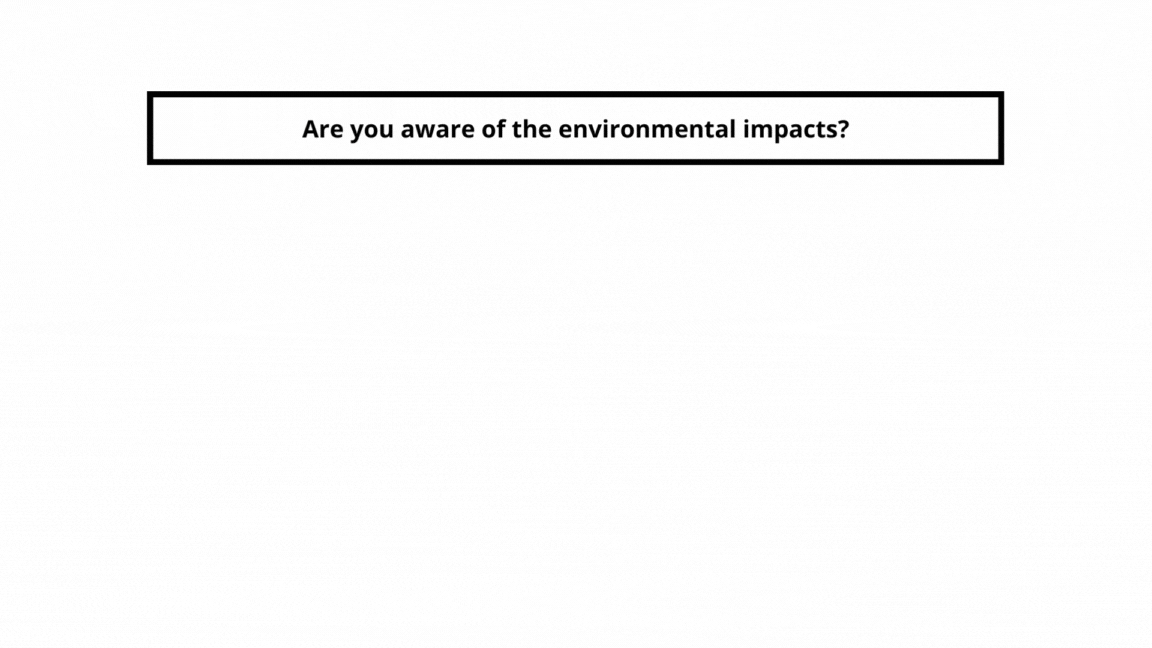
The majority of people who responded to our interview accept that they do not know the repercussions that the use of pesticides has in these two areas, as well as those who answered "yes" have limited knowledge of the scope that these chemical components added to their crops can have.
A situation that creates alarm for us is that only half of our sample uses any safety protocol and specialized equipment to protect themselves when applying the pesticide. This is extremely dangerous since improper contact can lead to death.
Despair, together with the rush to attack pests, has led several farmers to practice poor agricultural practices, for example: applying more doses of pesticides or mixing several, which increases the negative environmental and health impact.
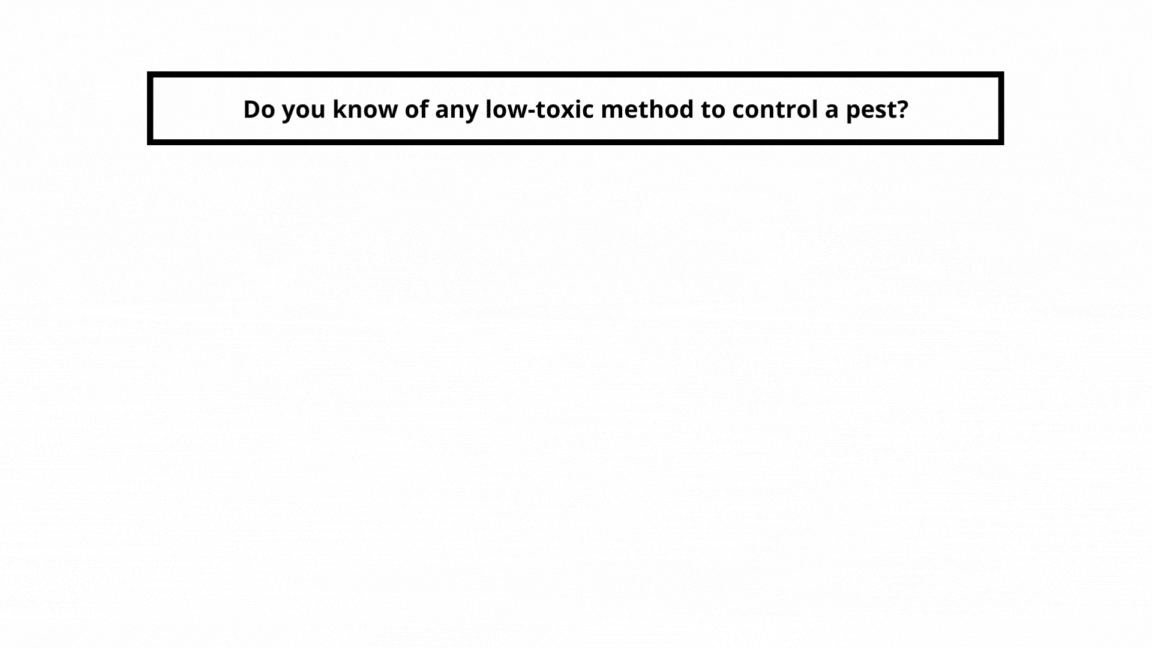
With the previous graph we can see that the current agricultural model lacks low-toxic proposals, since the current predominant industry only offers chemical elements as a solution.
That is when we asked if anyone knows what Synthetic Biology is and what it involves, everyone answered 'no', so we expanded our knowledge about this branch and explained several examples.
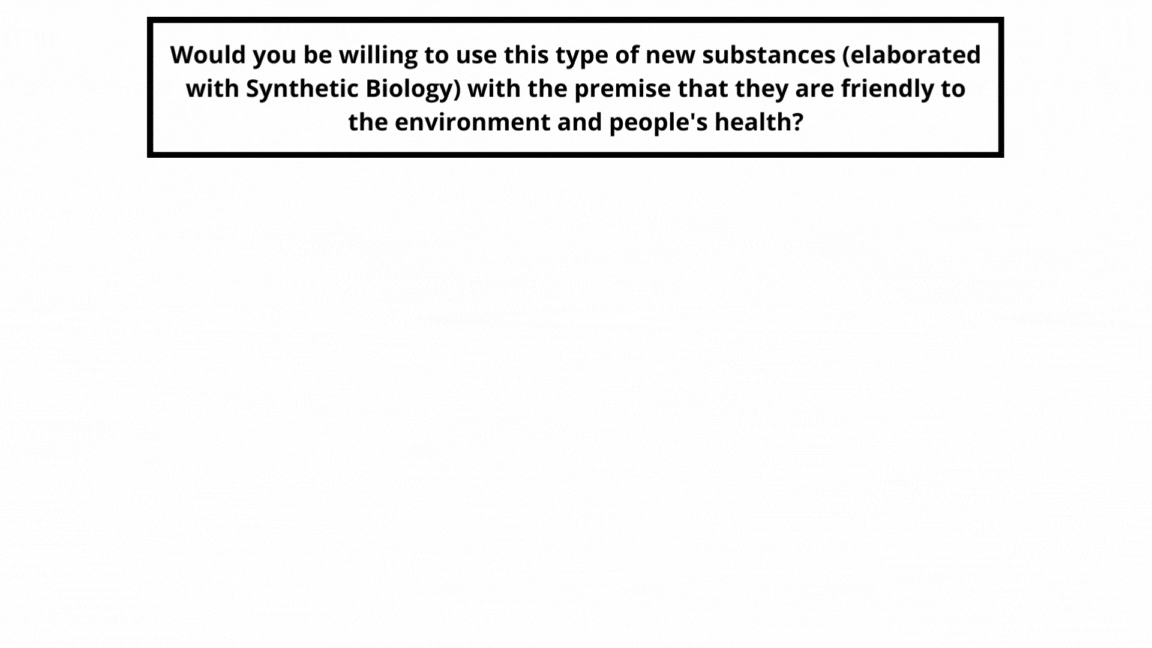
When raising this premise, 90% expressed their willingness to use a biopesticide, although they were cautious, specifying that the condition would be that it does not affect them and that they have a guarantee that it will work, since they put their assets at risk.
Farmer's Recommendations
Since farmers are the main interest group, those who are dedicated to this activity and those who have direct contact with pesticides; their experience, recommendations, and opinions are highly valuable to consider the characteristics necessary for the product to be functional and well accepted:
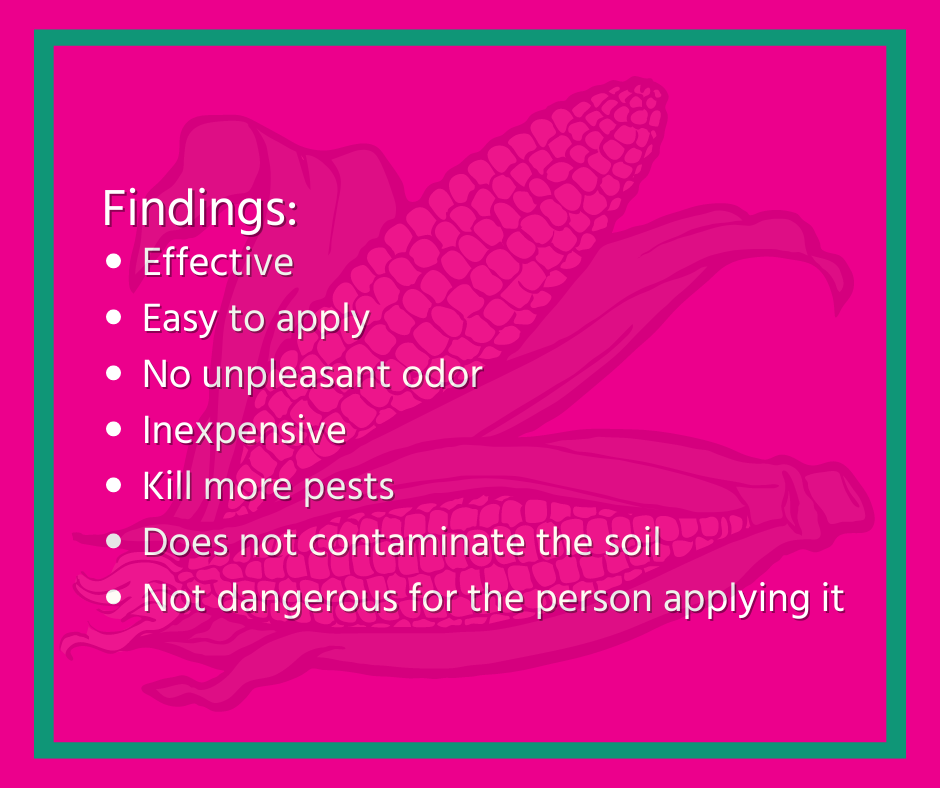
Solving Local Problems
The environmental and human health damage caused by the chemical pesticides that currently lead the food industry is excessive, adding that in Mexico the use of substances that are currently prohibited in agriculture continues. In other countries, this reveals the deficiencies on the part of our government in implementing public policies that regulate their management.
Although there are many interests through different people who care little about the negative impact they can cause, it is worth dictating a change for the benefit of society, specifically those who are in the most vulnerable link in the chain.
Our project focuses on providing a substance that meets the highest health standards and that its impact does not affect the environment.
To verify if it is viable to extend a project of this magnitude, we devised an analysis of the events that we can influence on a local scale:
